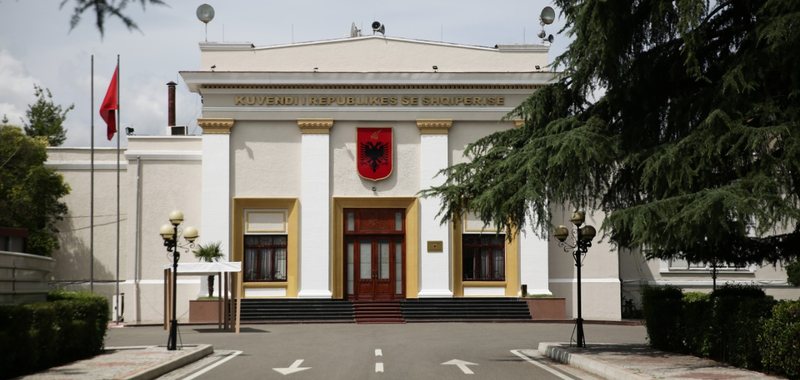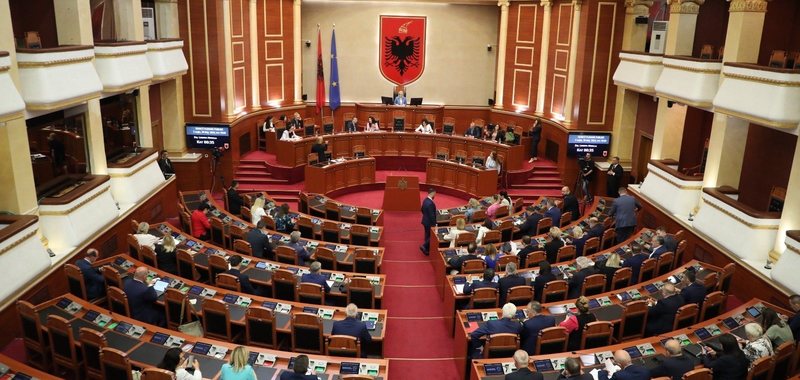Is the map of Albania “overturned”? - New administrative-territorial division. Depopulation is reflected, units are strengthened

The map of Albania will change. The country's territory will be divided into new regions and the number of municipalities is expected to be reduced.
After 10 years of administrative-territorial reform, Prime Minister Edi Rama has announced that the time has come for its review, based on the data produced by the 2023 Census.
According to this data, in the last 12 years the Albanian population has shrunk by nearly 400 thousand inhabitants and currently around 2.4 million inhabitants live in our country.
The administrative-territorial reform was undertaken in 2014, precisely because of the effects produced by demographic, social and economic changes, which were highlighted by the 2011 Census, where Albania's population was decreasing compared to 2001.
For this reason, since many units had shrunk and did not have the ability to provide services, the government decided to reduce the number of local self-government units from 373 to 61 municipalities, giving the new units the opportunity to manage larger territories, a higher population, in order to increase the ability to administer taxes, collect revenues and increase the quality of services. Another goal was to reduce costs.
But now a decade after this reform, Albania finds itself at the same crossroads. Due to the phenomenon of emigration, municipalities have lost population, shrinking significantly. Referring to the 2023 census, 14 out of 61 municipalities have a population of less than 10 thousand inhabitants under administration, while 5 municipalities have less than 5 thousand inhabitants, such as Libohova, Këlcyra, Pusteci, Konsipoli, Fushë-Arrësi.
Data from local governments show that these are economically weak municipalities because with the revenues they collect, they fail to fulfill their main functions, thus leaving citizens without sufficient services and investments. In these conditions, when more financial support is required from the government, the next challenge is how these units can become economically sustainable and would their reduction be the best solution?
The data show that despite the fact that local government revenues have increased in recent years, the increase is not proportional, but is mostly concentrated in large and coastal municipalities, while expenses have also increased significantly, mainly expenses for personnel salaries and operational expenses, while investments are at very low levels, averaging 20%.
Meanwhile, the real challenge of local government is also the preparation for Albania 2030 in the European Union, where it is necessary to increase the quality of local government processes and services.
So a new reform aims to bring better territorial administration, more financially stable municipalities, and better services.
For this reason, a special parliamentary commission will be established to immediately begin analytical work in order to deepen this reform, reflecting the very significant changes of these years, from demography to technology. This reform will have a broad public consultation in which all parties will participate.

The President of the Republic, Bajram Begaj, mandates Prime Minister Edi Rama to form a new government!
At noon, the President of the Republic, Bajram Begaj, mandated Prime Minister Edi Rama to form a new government. For his part, the Prime Minister has......

Green Coast Hotel - MGallery Collection wins the "Architectural Highlight of the Year" award at the GRI Awards Europe 2025
At the ceremony organized in Paris by the GRI Institute, Green Coast Hotel - MGallery Collection was awarded the prestigious award for the best architecture......

New Complex for the Parliament of Albania - From Additions to the Existing Building, to the Collapse of the Pyramid. What Were the Previous Projects?
The Albanian Parliament exercises its functions in two buildings, one located on “Dëshmorët e Kombit” Boulevard which serves as the Speaker of the Assembly......

Parliament with 101 MPs! What could be the impact? Analysis of the economic and institutional impact of the decision announced by the Prime Minister
Prime Minister Edi Rama proposed at the Socialist Party National Assembly on September 11 to reduce the number of MPs in the Assembly to at least 101, from......

Electrification of the Tirana-Durrës-Rinas railway - EBRD opens 2-phase tender, invites companies to submit technical offers
The European Bank for Reconstruction and Development has opened a 2-phase tender for the electrification of the Tirana - Durrës railway line and the new......

First session of the 11th legislature of the Assembly - The mandate verification commission is established. Tensions from the opposition again
The 140 deputies elected in the May 11 elections addressed the Assembly this Friday, thus starting the work for the 11th legislature. The session was......

What are the first decisions of the "Rama 4" government? - From property protection, to pensions and baby bonuses
The new "Rama 4" government is expected to push forward important reforms that affect all sectors of the economy and social welfare. But what are the first......

Diella, the first minister created by AI - How does the world media react to Albania's virtual official?
Albania has attracted the attention of international media, after becoming the first country in the world to introduce a minister created with artificial......





















